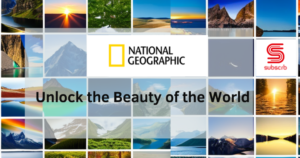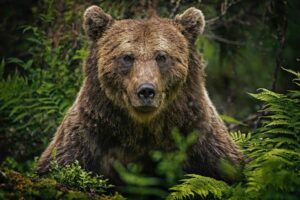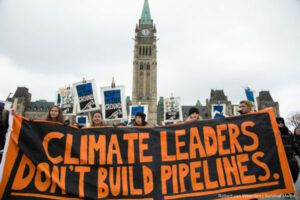‘This is the loudest wake up call’: National Geographic documentary ‘The Last Ice’ warns of the dire consequences of melting sea ice
National Geographic’s latest documentary, The Last Ice, tells the harrowing story of how Inuit communities in Canada and Greenland are being impacted by the melting sea ice in the Arctic.
Pikialasorsuaq is surrounded by “last ice area,” which is expected to remain when all other areas with significant summer ice will be gone. Protecting this area is essential for the surrounding communities and the sea ice dependant wildlife.
“The Arctic is warming twice as fast as the rest of the world,” Dr. Enric Sala, executive producer and National Geographic’s Explorer-in-Residence said in a panel discussion following the film’s premiere on Oct. 7. “The Inuit are really the human face of global warming, and all these activities that produce all this carbon pollution are not in the Arctic region, they are mostly in a world where we are or farther south, but they are suffering the consequences.”
“This is…one more example of how everything is connected, how everybody is connected and that if you tamper with nature, or the climate, on one part of the world, the consequences are going to be global.”
These areas are also being threatened by industrial opportunities from oil and gas deposits, the desire for faster shipping routes and tourism through these melting areas of ice.
It was a four-year process to create The Last Ice, beginning in 2015. Director Scott Ressler revealed it was initially set to be a more scientific “traditional wildlife and sea-ice” documentary but the team quickly realized that the story was much bigger, with so many interconnected human stories to tell.
One of the people featured in the film is Maatalii Okalik, originally from Panniqtuuq, Nunavut and a known Inuit youth advocate. Through her story, among others, the documentary shows a variety of threats to how people in these areas survive, including the lives of animals, maintaining and carrying forward cultural traditions, and even the relatively unknown interconnectedness of the people in Greenland and Canada.
“The struggles that people before us had experienced as they work towards ensuring that we had rights…are the same struggles that we experience today,” Okalik said. “The same systemic racism that they’ve experienced in their daily lives, we continue to experience today.”
“Families who have lived in those regions for many generations and learning traditional practices from the knowledge keepers are having to not only adapt to a changing climate but also, essentially, having to relocate to a whole other area that impacts that knowledge transfer and ability to safely live in your homeland.”
Okalik revealed that in Nunavut alone, seven out of 10 Inuit are food insecure due to the high cost of living, because food needs to be shipped to the area by plane.
“It is very important that we have access to hunt food, because that will be our main food source in many instances, and when we can’t do that, that just exacerbates our ability to survive,” she said.
At the panel discussion, Okalik told a story about a woman she spoke to whose husband, a hunter that not only fed his family but also many people in the community, died when he fell through the ice and she had to have his funeral without having a chance to bury him.
“That is, I think, a more common thing than what you read in the newspaper,” she said. “There are very real human impacts on Inuit as we see a changing climate and it worries us very much.”
As COVID-19 sweeps across the globe, coinciding with the release of this documentary, Dr. Sala said the pandemic shows that “we have taken too much out that the planet is providing for us.”
“We are acting like we have five planets,” he said. “We have realized that, wow, we did not build for resilience.”
“This is the loudest wake up call, we cannot continue exploiting the resources of the planet, like we have until now, we do not need oil from the Arctic, we need to phase out fossil fuels and replace them with renewable energies if we are to prevent catastrophic climate change and the collapse of our life support system.”
Director Ressler believes it is “absolutely critical” for people to understand that there are still thriving communities in the Arctic.
“I think there’s maybe a misconception about the Arctic or in the way that it’s been portrayed in the past as this sort of magical, otherworldly place,” he said. “Maybe a lot of people don’t even realize that there are thriving communities there who are facing these very immediate challenges.”
“With the film, that’s one of the the biggest, not only challenges, but opportunities we saw … to be able to sort of flip that perception and to say, you know there are people living here, they live in connection and balance with nature in a way that the rest of the world has really lost.”
The Last Ice will broadcast on National Geographic WILD on Oct. 12.






